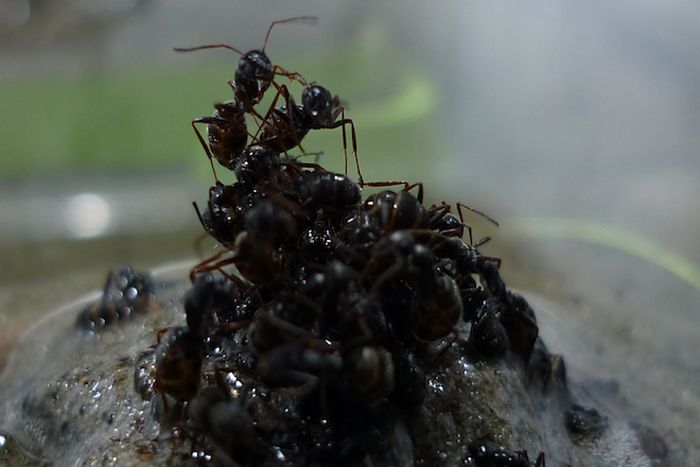Ants Build Raft to Escape Flood, Protect Queen

Ants may be small, but they’re certainly not stupid, as evidenced by the discovery that they build rafts to save themselves and their queen during floods.
What’s more, they construct the rafts using themselves — living ants — linked together to form a nearly waterproof buoyant vessel, according to a study published in the latest issue of PLOS ONE.
“Social organisms have an advantage when responding to ecological adversity: They can react in a collective and organized way, working together to perform tasks that a solitary individual could not achieve,” Jessica Purcell from the University of Lausanne and her colleagues wrote.
NEWS: Swarming Ants Offer Robot Rescue Tips
Surprisingly, baby ants were used to form the base of the raft. Worker adult ants then joined together to form the rest of the structure. The queen was always placed in the safest spot — right at the center of the raft.
“We expected that individuals submerged on the base of the raft would face the highest cost, so we were astonished to see the ants systematically place the youngest colony members in that position,” Purcell said in a press release.
Sign up for the Live Science daily newsletter now
Get the world’s most fascinating discoveries delivered straight to your inbox.
She continued, “Further experiments revealed that the brood are the most buoyant members of the society and that rafting does not decrease their survival … this configuration benefits the group at minimal cost.”
PHOTOS: Animals Rescuing Animals
Who knew that baby ants float? Well, we do now. It’s no wonder that ants so often outsmart humans, foiling extermination attempts.
Ants are up there with cockroaches and other tough creatures that are true survivors. They aren’t the only non-human organisms, though, to join forces for self-preservation.
Purcell and her colleagues share that Japanese honeybees “will surround large predatory hornets and form an ‘oven,’ raising the interior temperature to kill the intruder.”
Another example is demonstrated by leafcutter ants, which form defensive lines around vulnerable ants to block invaders.
As for the fate of the rafting ants, nearly all survived.
This story was provided by Discovery News.











